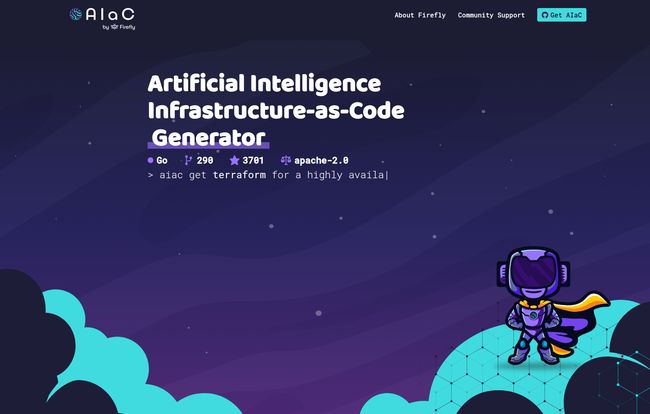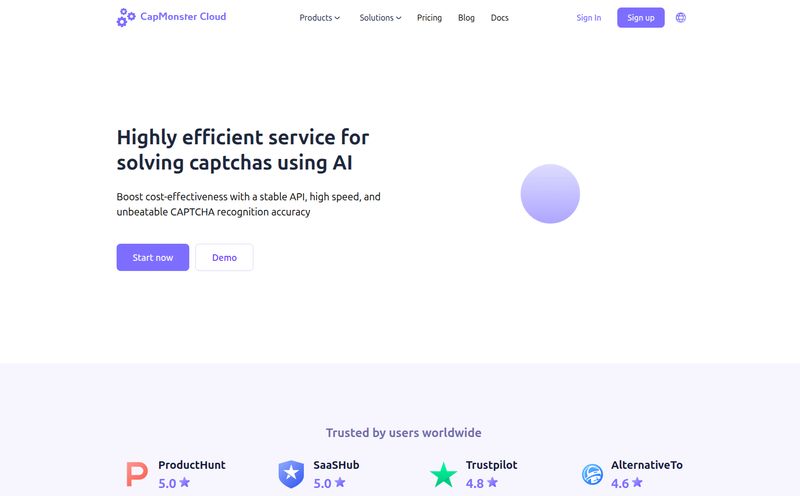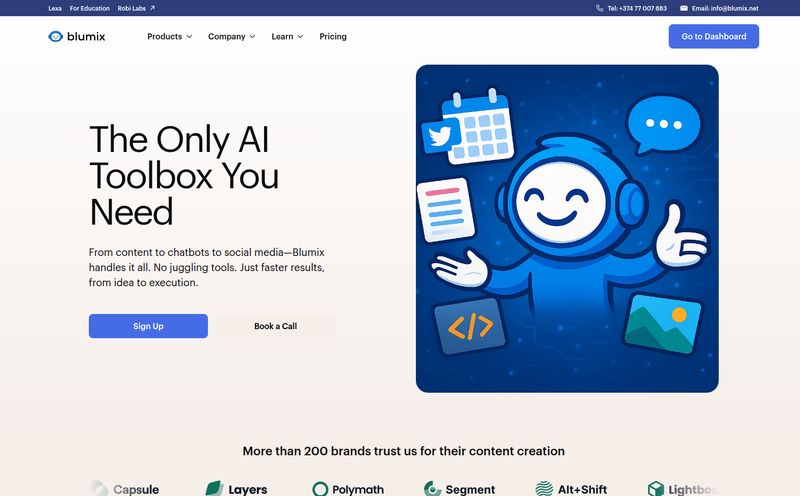How many hours have you, me, or anyone on a DevOps team lost to writing, rewriting, and debugging Infrastructure as Code (IaC)? Staring at a blank main.tf file, trying to remember the exact syntax for an AWS security group or a Kubernetes deployment YAML. It's a necessary evil, the plumbing of the modern cloud, but man, can it be a drag.
I've been in the trenches with Terraform, CloudFormation, and Pulumi for years. I’ve built a sort of muscle memory for it, but there are still days when I spend more time on Stack Overflow than in my IDE. So, when I hear about a tool that promises to use AI to lighten that load, my ears perk up. Enter AIaC by Firefly, an open-source command-line tool that's been making some noise.
Is it another piece of AI hype, or is it a genuinely useful co-pilot for the cloud-native world? I’ve been kicking the tires on it, and I have some thoughts.
So, What Exactly Is AIaC by Firefly?
At its heart, AIaC is beautifully simple. It’s a command-line interface (CLI) tool that you feed a plain English prompt to, and it spits out IaC code. Think of it like having a conversation with your terminal. You say, “Hey, I need a Terraform config for a basic EC2 instance in us-east-1,” and poof, it generates the code for you.

Visit AIaC by Firefly
Under the hood, it’s powered by the mighty OpenAI API—the same brain behind tools like ChatGPT. But instead of writing poems or emails, it's been fine-tuned for the world of infrastructure. It’s like having a junior DevOps engineer on speed dial, one who has memorized every piece of IaC documentation ever written and never complains about getting the same request twice.
It's not just for one-off tasks either. The goal is to generate templates, entire configurations, helper utilities, and even complex queries, all from a simple command.
The Good Stuff: What I Love About AIaC
I was skeptical at first, I always am. But after playing around with it, a few things really stood out. This isn't just a gimmick; there's real substance here.
It's Incredibly Fast
This is the most obvious win. The time it takes to Google the syntax for a specific resource, find a good example, copy-paste it, and then adapt it to your needs... that’s easily 10-15 minutes, sometimes more. With AIaC, you type a sentence and get a working scaffold in seconds. It turns a half-hour of documentation-digging into a 30-second command. That time adds up, especially across a whole team.
Taming the Complexity Beast
Okay, generating a single S3 bucket is easy. But what about a highly available web server setup with a load balancer, auto-scaling group, and a security group that only allows traffic from that load balancer? Crafting that from scratch can be a headache. With AIaC, you can describe that entire complex setup in one prompt. The tool connects the dots, generating resources that reference each other correctly. It's not magic, but it feels pretty close sometimes.
A Polyglot for Your Cloud
We live in a multi-framework world. While Terraform is the big gorilla in the room, tools like Pulumi, Crossplane, and even good ol' Dockerfiles are part of our daily lives. AIaC gets this. It supports multiple IaC frameworks. You can ask for a Terraform module, then immediately ask for a similar setup in Pulumi using TypeScript. For teams that use different tools for different projects, or for individuals trying to learn a new framework, this is a massive advantage.
Let's Be Real: The Not-So-Perfect Parts
No tool is perfect, and AI-powered ones come with their own unique set of quirks. It's important to go in with your eyes open.
The OpenAI API Elephant in the Room
AIaC itself is free and open-source (yay!), but it relies on the OpenAI API to do its thinking. This means you need your own OpenAI API key, and you'll be billed for your usage. Now, for generating IaC templates, the cost is pretty minimal—we're talking fractions of a cent per request. But it's not zero. For heavy users or large teams, it's a cost you have to factor in. You're paying for the 'AI brain' rental, so to speak.
Don't Trust Blindly: Always Review the Code
This is my biggest piece of advice for any AI code generator. The code AIaC produces is often very good, but it's not infallible. It might occasionally use a deprecated attribute, make a small logical error, or miss a security best practice. You are still the pilot. Think of AIaC as your co-pilot—it handles the boring stuff, but you have the final say and responsibility. Always, always review the generated code before you run `terraform apply`.
Garbage In, Garbage Out
The effectiveness of AIaC is directly tied to the quality of your prompt. A vague prompt like “make a server” will give you a vague, probably useless, result. A specific prompt like “generate a terraform configuration for an AWS t3.micro EC2 instance running Amazon Linux 2 with a 20GB gp3 EBS volume and a security group allowing SSH from my IP” will give you gold. Learning how to 'talk' to the AI is a skill in itself. It's less about coding and more about being a great communicator.
Is There a Price Tag?
I touched on this, but let's make it clear. The AIaC tool itself, being open-source under the Apache-2.0 license, is free. You can clone the repo, build it, and use it as much as you want without paying the Firefly team a dime. The cost comes from the OpenAI API calls it makes. You can check out OpenAI's pricing page for the latest rates, but for most IaC generation, you’ll be using their cheaper models, and the cost should be negligible for individual use.
Who Should Be Using AIaC?
So, who is this for? I think it has a pretty broad appeal.
- DevOps & SRE Veterans: For us, it’s a speed booster. It eliminates the tedious boilerplate and lets us focus on the complex architecture and logic.
- Developers New to IaC: This is an incredible learning tool. Instead of getting frustrated by syntax, you can see how a proper configuration is structured and learn from the generated code.
- Platform Engineering Teams: It can be a great way to quickly scaffold out new modules or templates that adhere to a certain pattern.
- Anyone who's just plain curious: If you're interested in the intersection of AI and infrastructure, it's a fun and practical tool to experiment with.
It's not a replacement for a skilled engineer. It's a force multiplier. A tool that augments our skills, not automates them away.
Frequently Asked Questions about AIaC
- What is AIaC by Firefly?
- AIaC is a command-line tool that uses Artificial Intelligence, specifically OpenAI's API, to generate Infrastructure as Code (IaC) files like Terraform, Pulumi, and Kubernetes YAML from natural language prompts.
- How does AIaC generate code?
- It takes your text prompt, sends it to the OpenAI API with a set of instructions optimized for IaC, and then formats the AI's response into a proper code file. You're essentially having a conversation with an AI that specializes in cloud infrastructure.
- Is AIaC free to use?
- Yes, the tool itself is free and open-source. However, it requires an OpenAI API key, and you will be billed by OpenAI for the API usage, which is typically very low for this type of task.
- What IaC frameworks does AIaC support?
- It's designed to be flexible, supporting major frameworks like Terraform, Pulumi, AWS CloudFormation, Kubernetes YAML, and Dockerfiles. Its capabilities are always expanding based on community contributions.
- Do I need to be an expert to use AIaC?
- Not at all! It's actually a fantastic tool for beginners to get started and learn the structure of IaC. That said, having some foundational knowledge helps in writing better prompts and, more importantly, in reviewing the generated code.
- Is the generated code production-ready?
- It can be, but it shouldn't be considered production-ready without a thorough review by a human. Treat it as a very smart starting point or first draft, not the final, finished product.
My Final Take
After all is said and done, I'm genuinely impressed with AIaC by Firefly. It's a sharp, focused tool that does one thing and does it well. It neatly slots into that growing category of AI co-pilots that are changing how we work. It won’t replace your job, but it will almost certainly make it easier.
It's a testament to the power of the open-source community and a clever application of large language models. If you write any amount of IaC, you owe it to yourself to give it a spin. It might just become your new favorite command-line buddy.
Reference and Sources
- Official AIaC GitHub Repository: https://github.com/firefly-ai/aiac
- OpenAI API Pricing: https://openai.com/pricing



